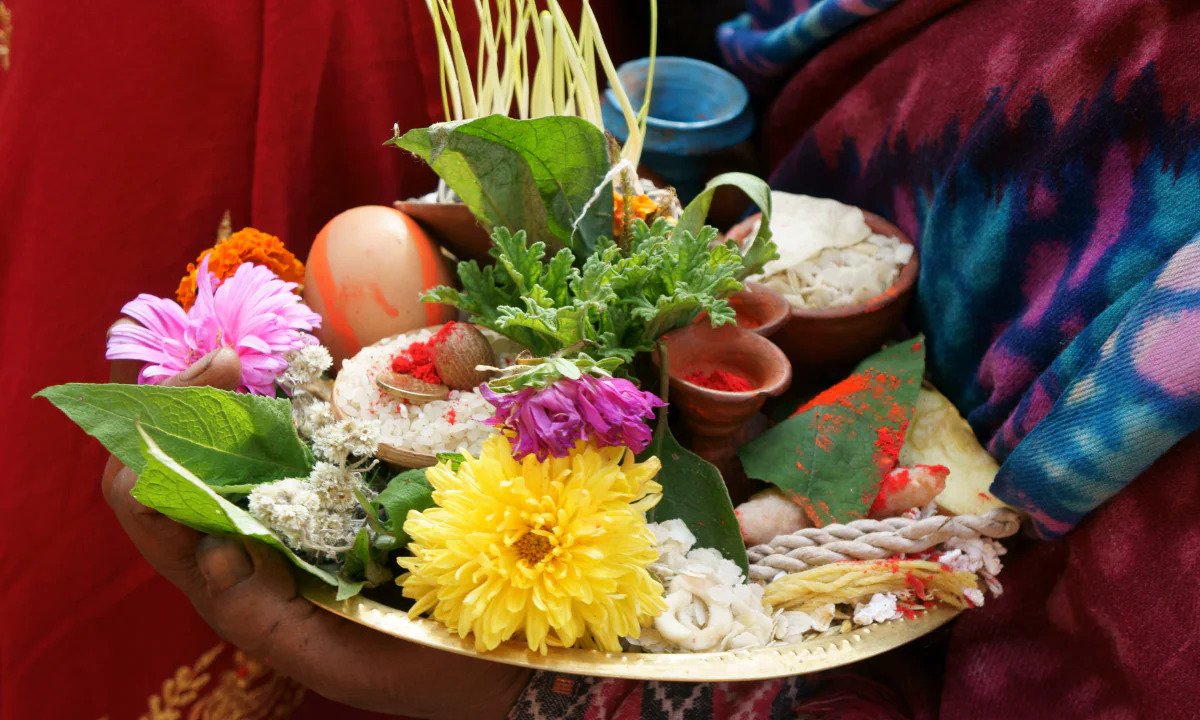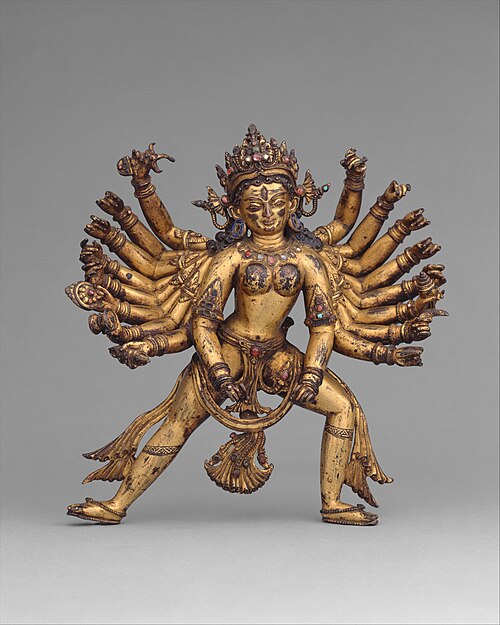Dashain (Nepali: दशैं; also called Vijaya Dashami) is a major Hindu festival celebrated primarily in Nepal, as well as among Nepali communities in India, Bhutan, and Myanmar. It typically falls in the month of Ashvin (September–October) and lasts for 15 days. Dashain commemorates the victory of good over evil, symbolized by Goddess Durga's triumph over the demon Mahishasura and Lord Rama's victory over Ravana.
The festival is the longest and most important holiday in Nepal, marked by family reunions, animal sacrifices, worship of goddess Durga, and the exchange of blessings and tika from elders. Schools, offices, and businesses close for several days during the celebration.
Origins and significance
Dashain combines various traditions of goddess worship, primarily those of Durga, Kali, and other forms of Shakti. According to Hindu mythology, the gods were powerless against the buffalo demon Mahishasura. To defeat him, Goddess Durga was created from the combined energies of all gods. She fought Mahishasura for nine days and nights, slaying him on the tenth day. This day became known as Vijaya Dashami ("Day of Victory").
Another story linked to Dashain is from the Ramayana. Lord Rama, with the blessings of Goddess Durga, defeated the demon king Ravana on this day. Hence, the festival is also associated with the victory of dharma (righteousness) over adharma (evil).
Celebration
Dashain lasts for 15 days, each with its own significance. Families clean and decorate their homes, purchase new clothes, and prepare special foods. The main days are as follows:
Day 1: Ghatasthapana
The festival begins with Ghatasthapana, when a sacred jar (kalash) is installed in homes and temples, symbolizing Goddess Durga. Jamara (barley seeds) are planted in a sand-filled vessel, which will be used later for tika.

Day 7: Fulpati
Fulpati is the ceremonial bringing of flowers, jamara, and other offerings into households. In Kathmandu, there is a grand parade where the royal kalash is brought from Gorkha to the capital.

Day 8: Maha Ashtami
On this day, people worship Goddess Durga in her fierce form, Kali. Animal sacrifices, especially of goats, buffaloes, and chickens, are offered in temples and homes to please the goddess.

Day 9: Maha Navami
This day is dedicated to the worship of tools, vehicles, and weapons, known as "Ayudha Puja". People believe this will bring success and safety. In Kathmandu, the Taleju Bhawani temple is opened to the public only on this day.

Day 10: Vijaya Dashami
The most important day of Dashain. On Vijaya Dashami, elders put tika (a mixture of rice, yogurt, and vermilion) and jamara on the foreheads of younger relatives, blessing them with prosperity and long life. Families reunite and exchange gifts.

Remaining days
The last five days (up to Kojagrat Purnima) are spent visiting relatives and receiving tika and blessings. Kojagrat Purnima, the final day, is dedicated to the goddess of wealth, Laxmi.
Customs and traditions
- Animal sacrifice: Considered a major ritual, though increasingly replaced by symbolic offerings such as coconuts or pumpkins in modern times.
- Kite flying: Popular during Dashain, symbolizing the connection between earth and heaven.
- Swing (ping) playing: Traditional bamboo swings are constructed in villages for children and young people.
- Card games and gatherings: Families and communities come together to celebrate.


Food
Special meals are prepared during Dashain. Meat, particularly goat is commonly eaten, along with sel roti (a traditional Nepali rice bread), yomari, and various sweets. Rakshi (homemade liquor) is also popular during the festival.

Impact
Dashain brings the entire country to a festive halt. Schools and government offices remain closed for more than a week. Transportation is crowded as people travel to their ancestral homes. For many Nepalis, Dashain is the only time of year when families are fully reunited.
Outside Nepal
Dashain is also celebrated by Nepali communities in India (especially Sikkim, Darjeeling, and Assam), Bhutan, and Myanmar. Among Hindus of Indian states, Dashain coincides with Dusshera, which commemorates Rama's victory over Ravana, marked by the burning of Ravana effigies.
Conclusion
Dashain is a festival of unity, victory, and blessings. It reinforces family bonds and cultural traditions while celebrating the triumph of good over evil. Even in modern times, Dashain remains the most significant and cherished festival for Nepalis worldwide.
